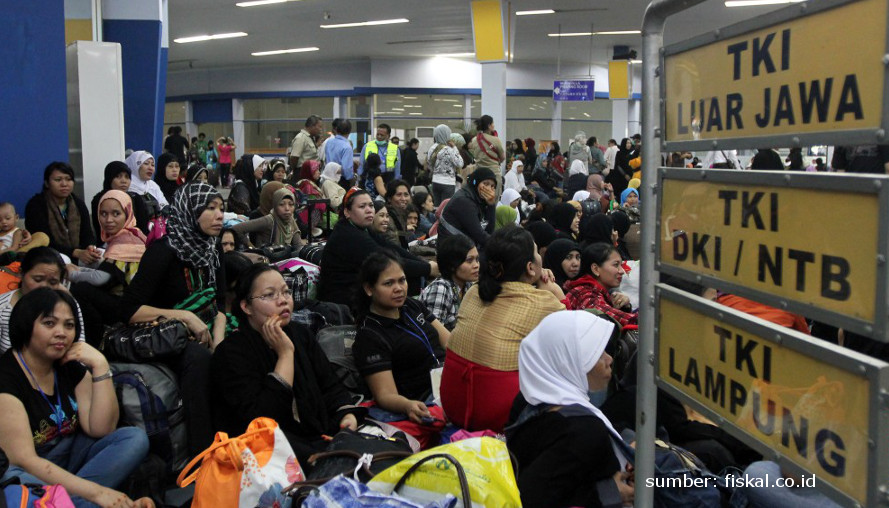
2011
Well-known author whose books always become global bestseller traveled from Abu Dhabi to Bali. He as surprise to find about 200 young Indonesian women in the plane, not one of them was much more than five feet tall.
“They are all maids” said an Indian businessman seated near him. The two men then compared Indonesia and India.” Indonesia exports raw labors, not brains” the Indian businessman mused.
This discussion forms the opening for a chapter of the book Hot, Flat and Crowded by Tomas Friedman. Unfortunately, the book that is likely to become a best-seller has portrayed Indonesia in a biased way.
Friedman tried to express his concern over world environmental problem and takes Indonesia as an example. His limited information on the country has made his book misleading. It portrayed Indonesia as a maid exporter.
Tom Friedman is not alone. Many foreign journalists have a fallacy in their mind. Many believe that what is true of a part is true of the whole. By knowing that Indonesia “export”raw labor, they conclude that Indonesia is a low quality nation.
They neglect that our students always dominate world math, physic or chemistry Olympic; that we are the producers of long list of world key commodities. They don’t care that we are one of the largest democracies, with peaceful 450 elections every five years and that media freedom is part of our daily live; or that our engineers have key role in major aircraft manufacturing operations from China to Europe.
The Economic of Migrant Workers
Despite the negative image they may cause, migrant workers bring a huge amount of US Dollar to Indonesia’s economy. There are around 5 million Indonesian migrant workers of which a significant percentage are illegal. With remittance of USD 11 billion in 2008, they have strategic role in the Indonesian economy. Their remittances are equivalent with 3.1% of GDP and more than 20% of foreign reserve, higher than the annual capital inflow through portfolio and direct investment.
What’s more, the remittances are stable over time; in fact remittances have often been higher in the time of crisis providing a buffer for the economy. This is in contrast to direct or portfolio investment that increase in a good times and decrease in a bad times, stimulating economic fluctuation.
Benefit and cost is like two side of a coin; they always come in tandem. The “cost” of sending migrant worker (TKI) is enormous, even though it is intangible and is not easy to measure; the lower their skill the higher the cost.
Among the ultimate cost is the degradation of Indonesian image as a raw labor exporter. In addition, around 49 percent of TKI are women which easily become target of sexual harassment, and often without legal protection.
In addition, significant shift in family structure also occur. Being TKI means living far away from families for a long time, potentially increasing the incidence of divorce.
More adult who stay away from the family means more children grow up without proper guidance. This may also impact children’s social, psychological and intellectual development.
For a province like West Nusa Tenggara, in which TKI make up 20% of its 3 million populations, these phenomena become obvious.
Future Opportunity
Notwithstanding this gloomy picture, migrant workers make a significant contribution, and looking ahead, opportunity beckons. The globalize economy means a more mobile workforce. This is happening at a time when Europe and Asian countries such as China, Singapore, Taiwan, South Korea and Japan are experiencing aging population.
In order to keep their economy moving forward, they have no option other than to invite migrant workers to contribute.
In the region, only a few countries have a surplus of productive workforce: the Philippines, Pakistan, Bangladesh, India, several Middle East countries and Indonesia.
Indonesians are perceived as friendly people with an adaptive attitude and culture. Assuming our workers have education level and skill comparable with workers from other countries, it is very likely that Indonesia will be the preferred human resources supplier.
It should become our focus to help workers prepare to reap benefit from these opportunities. In this case, applied education, soft skill and understanding on foreign language are essential. We need to improve the standard of training for those who would like to pursue job abroad.
Image Problem
In line with all the invalid information depicted by Thomas Friedman and other foreign journalists, the fact that Indonesia export raw labor is stuck in people mind, especially those who live in Singapore, Malaysia, Middle East, Hong Kong and Saudi Arabia. This image has made us feel uneasy, especially when we travel to these countries. What’s more, in this globalize world self fulfilling prophecy theorem hold. Often, image determines result.
The negative image heightened the challenge to us to compete in the high value added industry that involve high technology and sophisticated management skill. This image could also downgrade our standing in the global diplomacy.
The easiest way to commit the above image in the history books is to ban the supply of raw labor. However, considering the importance of migrant workers for the economy, this alternative is out of the picture.
Implementing a zero growth policy for raw labor could be an alternative. This policy could reduce the supply of raw labor as a mean to developing a stronger bargaining position. Gradually, we should replace raw labor with skill labor.
The effort should be accompanied with smart PR. We need to expose all the good achievement our nation have made, among the other is through keeping well-known opinion makers, like Friedman well informed about Indonesia.
This effort should be accompanied by smart PR. We need to expose all the achievements our nation has made, among other ways by keeping well-known opinion makers like Friedman well-informed about Indonesia.
If Malaysia greets the world with its ads “Malaysia a truly Asia”, South Korea with “The Soul of Asia” or India with “Incredible India”, we should build similar slogan. A tagline like “Visiting Indonesia, the ultimate ASIA,” could be a considerable alternative.
I would like to close this column with an interesting fact. The average Indonesian legal migrant worker remits close to USD 3,500 per-year, higher than the Indian of around USD 2,700 per-year.
I hope the Indian businessman whose statement I quoted at the beginning of this column realizes that Indonesia is not only has a higher per-capita GDP than India, but its migrant workers also earn more. It is not only Indonesia which exports raw labors, India does so in even larger number.
Wija is adviser of Paramadina Public Policy Institute, Indonesian VP’ special staff for Economy and Finance
This article was originally published in 2011
